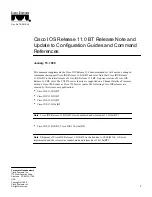
394
Chapter 18: Debugging and Troubleshooting Applications
Execution Time
The Execution Time section displays the time required to process the request. It displays
information about the time required to process all pages required for the request, including the
Application.cfm and OnRequestEnd.cfm pages, if used, and any CFML custom tags, pages
included by the
cfinclude
tag, and any ColdFusion component (CFC) pages. You can display
the execution time in two formats:
•
Summary
•
Tree
Note:
Execution tine decreases substantially between the first and second time you use a page after
creating it or changing it. The first time ColdFusion uses a page it compiles the page into Java
bytecode, which the server saves and loads into memory. Subsequent uses of unmodified pages do
not require recompilation of the code, and therefore are substantially faster.
Summary execution time format
The summary format displays one entry for each ColdFusion page processed during the request.
If a page is processed multiple times it appears only once in the summary. For example, if a
custom tag gets called three time in a request, it appears only once in the output. In the
classic.cfm output format, the summary format looks like the following figure:
The following table describes the display fields:
The page icon indicates the requested page.
Any page with an average processing time that exceeds the highlight value that you set in the
ColdFusion MX Administrator Debugging Settings page appears in red.
Column
Description
Total Time
The total time required to process all instances of the page
and all pages that it
uses
. For example, if a request causes a page to be processed two times, and the
page includes another page, the total time includes the time required to process
both pages twice.
Avg Time
The average time for processing each instance of this page and the pages that it
uses. The Avg Time multiplied by the Count equals the Total Time.
Count
The number of times the page is processed for the request.
Template
The path name of the page.
Summary of Contents for ColdFusion MX
Page 1: ...Developing ColdFusion MX Applications...
Page 22: ...22 Contents...
Page 38: ......
Page 52: ...52 Chapter 2 Elements of CFML...
Page 162: ......
Page 218: ...218 Chapter 10 Writing and Calling User Defined Functions...
Page 250: ...250 Chapter 11 Building and Using ColdFusion Components...
Page 264: ...264 Chapter 12 Building Custom CFXAPI Tags...
Page 266: ......
Page 314: ...314 Chapter 14 Handling Errors...
Page 344: ...344 Chapter 15 Using Persistent Data and Locking...
Page 349: ...About user security 349...
Page 357: ...Security scenarios 357...
Page 370: ...370 Chapter 16 Securing Applications...
Page 388: ...388 Chapter 17 Developing Globalized Applications...
Page 408: ...408 Chapter 18 Debugging and Troubleshooting Applications...
Page 410: ......
Page 426: ...426 Chapter 19 Introduction to Databases and SQL...
Page 476: ...476 Chapter 22 Using Query of Queries...
Page 534: ...534 Chapter 24 Building a Search Interface...
Page 556: ...556 Chapter 25 Using Verity Search Expressions...
Page 558: ......
Page 582: ...582 Chapter 26 Retrieving and Formatting Data...
Page 668: ......
Page 734: ...734 Chapter 32 Using Web Services...
Page 760: ...760 Chapter 33 Integrating J2EE and Java Elements in CFML Applications...
Page 786: ...786 Chapter 34 Integrating COM and CORBA Objects in CFML Applications...
Page 788: ......
















































